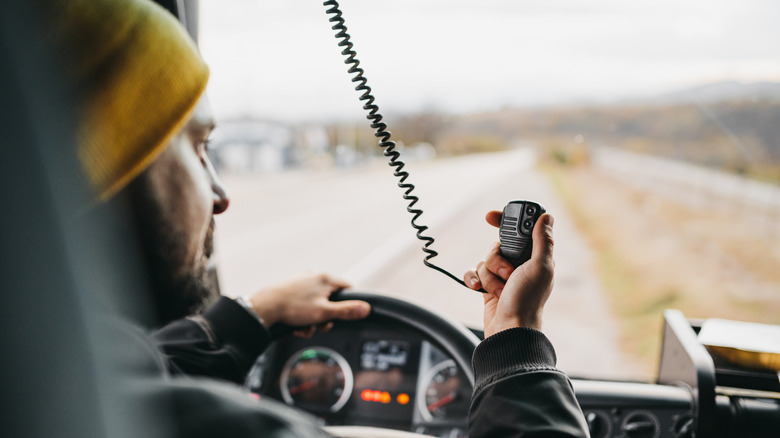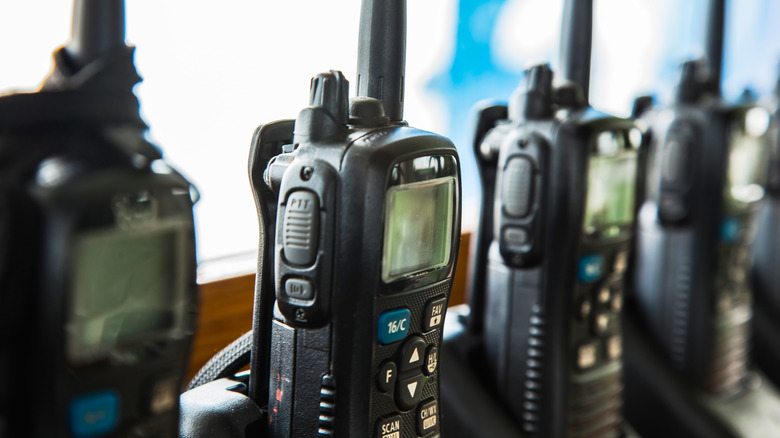What's The Difference Between 2-Way & CB Radios?
The difference between 2-way radios and CB radios is deceptively simple since any piece of equipment that can send and receive radio signals is technically a 2-way radio. But that's not going to help you at an electronics store. Both allow you to communicate with people far away without having to yell, on airwaves that don't require transmission towers. One isn't inherently better than the other, it's simply a matter of each serving specific communication needs, like if you're camping, driving, going on a hike, or if you just like ending sentences with "Over."
Most associated with truckers, CB radios (Citizen's Band) are often found in vehicles like trucks and RVs, though occasionally mounted in homes as well. They're bulkier than your average 2-way radio, and when connected to an external antenna attached to a home or vehicle, can offer a range of 3 to 20 miles, according to Moonraker. That range can vary heavily based on the antenna, level of transmitter power, and the terrain in your area. Tunnels and mountains obviously tend to cause a few hiccups.
Portability and range
As the FCC describes, CB radios operate on 40 shared channels on what's known as a "take-turns" basis. That means that it's open to the public and one should never assume that any conversation is completely private, as anyone within range can intentionally or accidentally overhear it. CB can be quite useful for up-to-date road conditions and police reports, with Channel 9 generally reserved for distress and emergency calls. Due to their usefulness and ease of access, CBs are common among truckers, farmers, and numerous types of trade workers.
The main difference between CB and 2-way radios is it's highly unlikely a CB will fit in your pocket. In a way, CB radios are more akin to Ham Radio Setups in that they have a more permanent place where they live, and they're less portable than their 2-way radio counterparts.
Most 2-way radios, often known as "walkie-talkies," are compact, hand-held portables that don't require an external antenna, and can be easily brought along on hikes, camping trips, or for an advanced game of hide and seek. One also shouldn't assume such conversations are private, but since people are usually using them in the woods, it's less likely someone will overhear you. Some walkie-talkies come with the ability to pair up two devices and encrypt the conversation with a security key.
Walkie-talkies often operate on FRS mode (Family Radio Service), which tends to reach up to around a couple miles at the highest, depending on the channel used and the conditions in the area. There's also the more official-sounding General Mobile Radio Service mode (GMRS), which has a higher power output and can potentially reach longer ranges. But those require a license from the FCC.
Whether you're driving across the country or hiking in the woods, a CB and 2-way radio are ideal ways to add a bit of safety and adventure to the trip and are both a little more fun and sometimes even more useful, than a cellphone.

